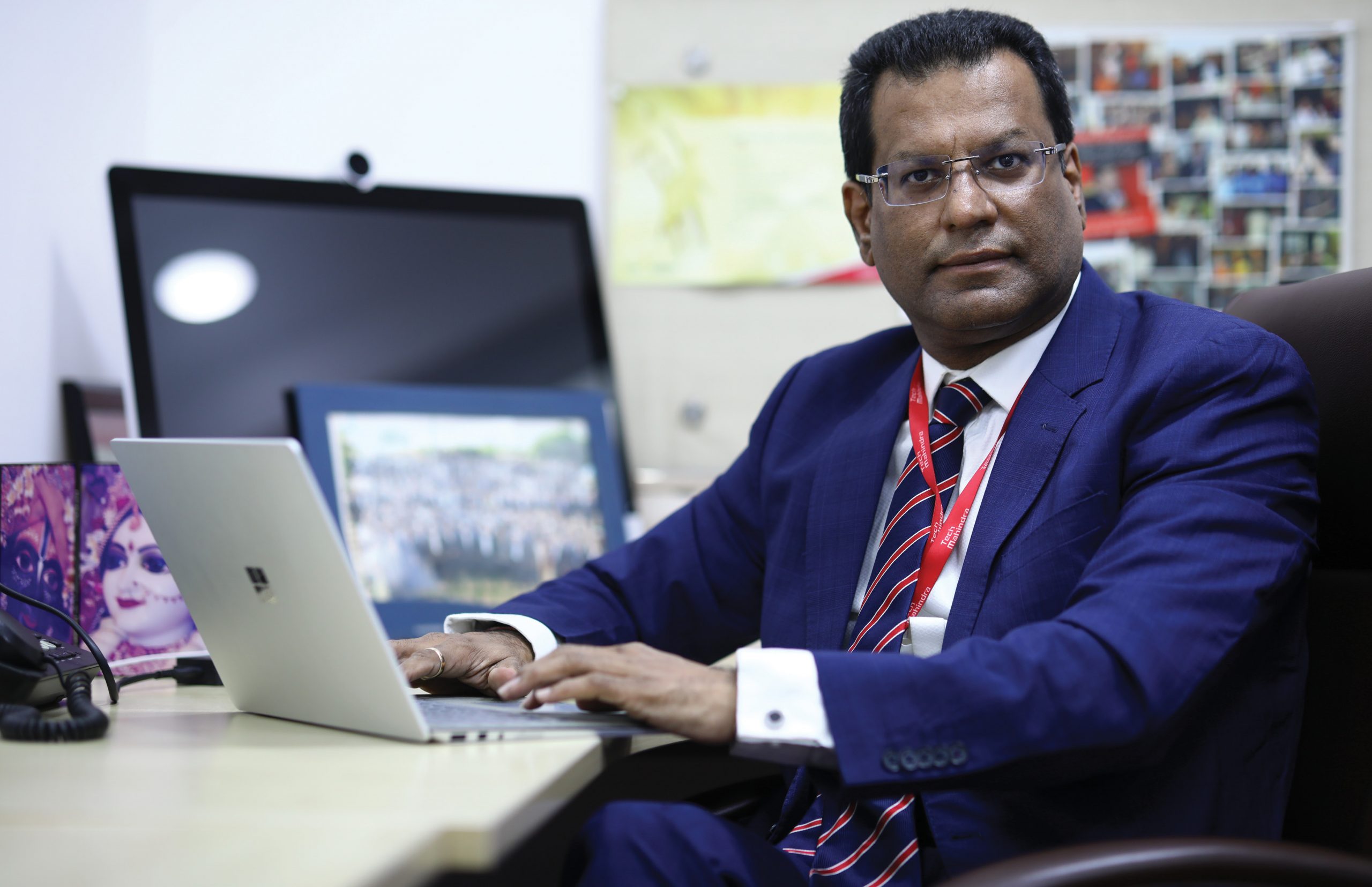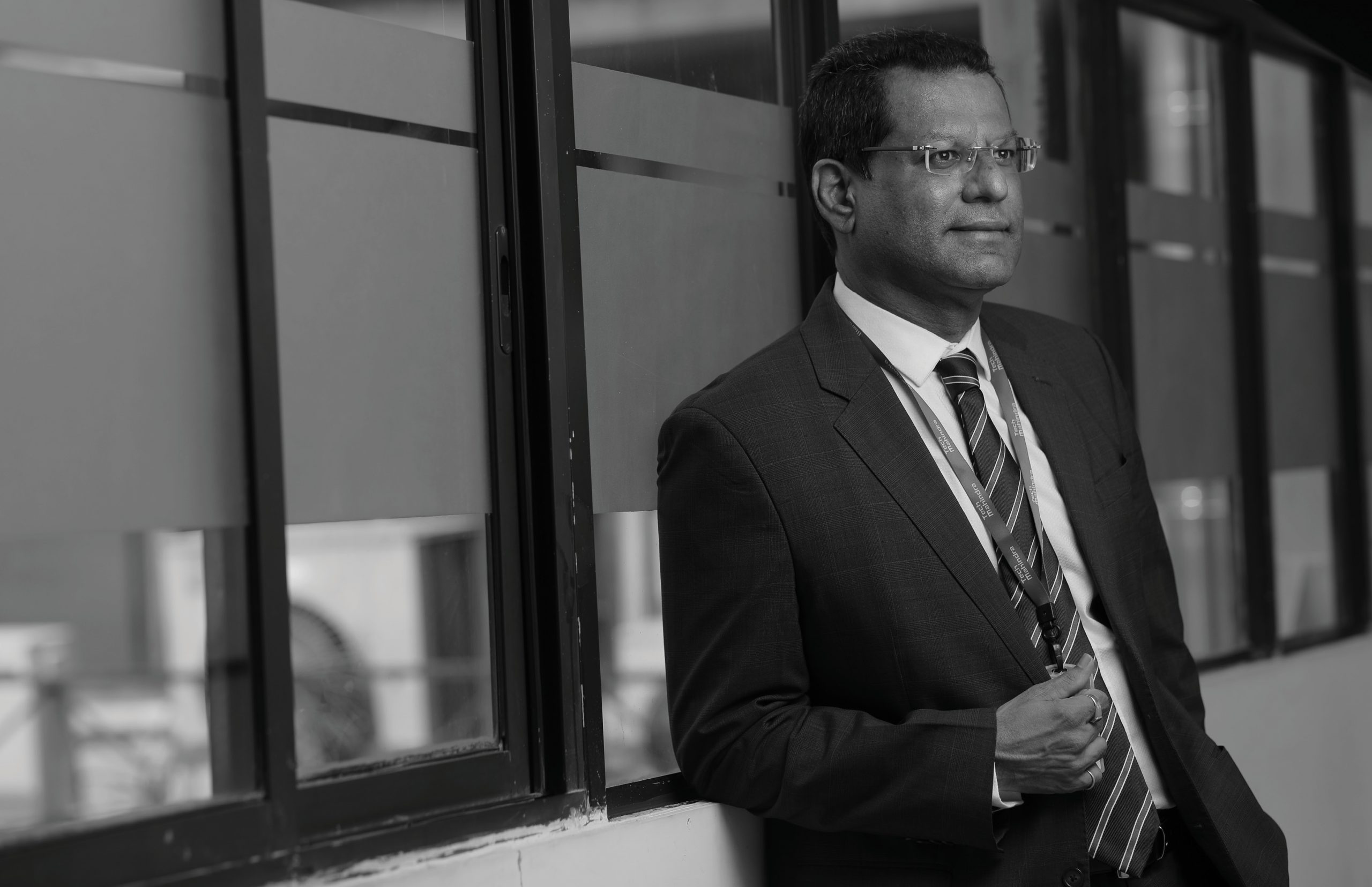Language
You can read the magazine in one of the following languages
Having been immersed in information and communications technology for more than 30 years, Rajesh Chandiramani has witnessed firsthand some of the business world’s most dramatic upheavals. Now, as Senior Vice President and Global Business Head for Digital Technology at Indian-based technology giant Tech Mahindra, he is sharing his firm belief that digital will disrupt every business model over the coming years, with companies too timid to swiftly harness the power of technology to be left behind.
While this may seem like old news to many, the reality is that many industries such as banking, oil and gas, and life sciences have not yet seen the same rates of disruption as other industries like telecom, retail and consumer goods.
“Digital is going to be the biggest enabler for the next wave of businesses, and any business that stays traditional will get disrupted by some new startup company coming in,” Rajesh tells The CEO Magazine.
In his current position since November 2019, Rajesh has already overseen the digital transformation of a whole host of businesses, but that is just the tip of the iceberg. “I have 1,100 customers around the globe and my digital penetration is only about 30 per cent. So 30 per cent of my customers have actually gone on a digital journey with me,” he shares. “I know for sure that in the next three years, every one of those 1,100 customers will be on an advanced digital journey.”

“Digital is going to be the biggest enabler for the next wave of businesses, and any business that stays traditional will get disrupted by some new startup company coming in.”
The companies he is working with are spread across a wide range of fields. “We will help them transform, whether it’s a bank, manufacturer, a financial institute, a retailer or an oil and gas company,” he insists. Tech Mahindra is also deeply involved in public sector transformations and, to date, has served more than 100 public sector customers around the globe.
The onset of the pandemic in 2020 only served to accelerate the rate of digital transformations taking place, Rajesh confirms. “The COVID pandemic forced people to work from home. It actually put digital on a fast track,” he says.
“Digital was already a very high-demand business, but it was more like a gold rush after COVID happened.” The world of work suddenly switched from what Rajesh described as “militarized” office zones where everything was controlled and secure to “demilitarized” remote working set-ups, which had to rapidly be brought up to speed.

“We run close to 12 innovation labs across the globe, where we invite youngsters and startups to come along and innovate with us.”
Innovation played a pivotal role in helping businesses cope and even thrive during this uncertain period, but it has always been a foundational feature of any digital journey. “Digital services is all about innovating and finding either a new experience, a new business model or a new product,” Rajesh says.
As a result, Tech Mahindra is constantly looking at two different types of innovation. “One is a horizontal innovation, where an electric bulb is converted to a LED,” he explains. “The other is a vertical innovation, where you are actually creating a new business model or a completely new product that never existed before.”
To oversee both types, Tech Mahindra has put in place a CIO who is kept very busy by the company’s increasing efforts in this area. “We run close to 12 innovation labs across the globe, where we invite youngsters and startups to come along and innovate with us,” he says.
The company is focusing on agriculture, health, finance, sport and quantum computing as key innovation areas, which it is addressing through its TechMNxt approach. Through TechMNxt, it has nurtured collaborations with more than 100 startups worldwide, harnessing their disruptive talents to create innovative new solutions for its customers.
“We have invested in Silicon Valley, we have invested in Tel Aviv and now Bangalore. China, we are still very closely looking at for our startup ecosystem because there are very good startups that are coming out of China,” Rajesh shares.
This investment in the startup sphere forms the third-tier of its three-tier partner ecosystem, according to Rajesh. Tier one is made up of bigger companies, critical as every US$1 of product revenue results in US$27 of service revenue for the lifetime of the product. “Through this three-tier approach, we have very strong partners that will help us grow big and we will help them grow even bigger,” he expands.

“I strongly believe in making things happen, so execution is a very, very important part of the strategy. If you can’t execute, then that strategy gets killed.”
“Some of our partners, like SAP, Micro Focus, Microsoft Azure, Google Cloud and AWS are also growing very, very big. Working alongside them and singing the song in harmony with them is also a very, very important part of being successful in my job. That has been an important part of my success over the last 20 years as a business leader.” Meanwhile, tier two is made up of vendors.
These initiatives are testament to Rajesh’s leadership style as well as the strength of the team, following on from his integral role in the integration of computer firm Mahindra Satyam into the business following its 2009 acquisition. The merger secured Tech Mahindra’s place as a major player in the IT world, which has gone on to report revenue of US$5.1 billion in the 2021 financial year.
“I’m known in the organization and the industry as a transformation guy. I look at the problem and I’m able to simplify it, then transform it,” he says. “That has been one of my biggest strengths. I strongly believe in making things happen, so execution is a very, very important part of the strategy. If you can’t execute, then that strategy gets killed.”
Selecting the right people to help execute those strategies is therefore critical. “I believe in empowering, selecting the right team, because I also believe that most leaders are as good as their team,” he says. “If you have the wrong person, then you’ll inevitably end up doing that person’s job because he’s not able to scale up. So having the right team, rallying with the team, enabling them – that is my leadership style.”
